Guggenheim Museum Bilbao – Architect: Frank O. Gehry
Euskadi - País Vasco, Spain
Phone: +34 944 35 90 80
Website: https://www.guggenheim-bilbao.eus/en
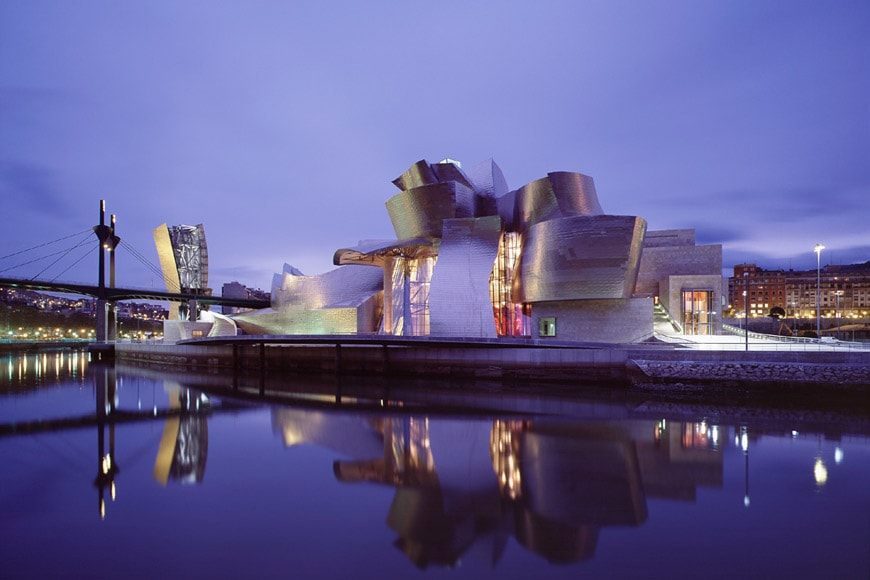
The Guggenheim Bilbao is a museum of modern and contemporary art and a world-renowned architectural landmark in Bilbao, the largest city of the Basque Country in northern Spain.
History
The Guggenheim Bilbao is part of the Guggenheim network, which also comprises museums in New York, Venice, and Abu Dhabi.
Opened to the public on October 18, 1997, the museum’s building, designed by Canadian-born American architect Frank O. Gehry, is famous for its organic-shaped titanium-clad facades. The museum has been one of the key factors of the “renaissance” of Bilbao and its transformation from an impoverished industrial center/port city into one of Spain’s most popular cultural and leisure destinations.
The idea behind the creation of the Guggenheim Bilbao was that it could be possible to rejuvenate a city through a large cultural project, developed through a collaboration between a public institution (the Basque government) and a private organization (the Solomon R. Guggenheim Foundation), the public side giving funding and a site for the museum, while the private side providing management and a group of artworks on loan to form the core of the new museum’s collection. A third point was to select an acclaimed contemporary architect (Frank Gehry in this case) to create a building as iconic as possible and apt to become the “hallmark” of the new institution.
The result was so positive that the new term Bilbao Effect was coined to indicate the capability to improve a debilitated local economy by creating a major cultural institution.
Aerial view of the Guggenheim Bilbao from the Iberdrola tower, located in a former industrial site along the Nervión River; photo Erika Ede courtesy of Guggenheim Bilbao.
Frank Gehry’s building
The museum is situated on a plot of land within Bilbao’s port area, along the Nervión River.
Possibly Gehry’s most famous design, the Guggenheim Bilbao combines elements typical of Deconstructivist architecture with organic and fluid forms.
The museum’s spaces are organized around a large central atrium, a futuristic cavern filled with daylight entering from an array of large glazed openings and skylights.
Distributed on three floors, the museum’s twenty galleries are connected by a network of bridges, corridors, elevators, and stairs.
While the building exterior, the atrium, and some of the galleries on the ground floor are characterized by complex geometries, curvilinear forms, and large use of daylight, most exhibition spaces are rather simple and more traditional “white boxes” without openings or views towards the outside.
Furthermore, while the exterior is boldly clad with sheets of shiny titanium, the interior makes large use of cardboard partitions; such contrast makes the 24,000-square-meter (258,000-square-foot) building, certainly visually stunning when seen from the outside or the atrium, sometimes looking like a giant theatrical set more than a solid architecture.
Due to its double-curvature, geometrically intricate outer skin, and structural frame, early 1990s traditional architectural and engineering design techniques were arguably inadequate for a so innovative building; therefore, the Guggenheim Bilbao was one of the world’s first major architectural projects to substantially rely on computer-aided design software, primarily CATIA, an aerospace-industry CAD developed by the French company Dassault Systèmes.
Guggenheim Bilbao, north facade; photo: Erika Ede, © FMGB Guggenheim Bilbao Museum
The art collection of the Guggenheim Bilbao
The museum’s collection is mostly focused on contemporary artists of the 20th and 21st centuries.
Along with displaying artworks on long-term loan from the Guggenheim Foundation, the Guggenheim Bilbao also features a large number of paintings and sculptures it has acquired or commissioned since its foundation, including works by Jean-Michel Basquiat, Anselm Kiefer, Willem de Kooning, Robert Motherwell, Sigmar Polke, Gerhard Richter, James Rosenquist, Clyfford Still, Cy Twombly, Andy Warhol, Joseph Beuys, Mark, and Robert Rauschenberg, Mark Rothko, Francesco Clemente, and Sol LeWitt.
The museum’s collection also pays special attention to modern and contemporary Basque and Spanish artists, including Eduardo Chillida, Juan Muñoz, Jorge Oteiza, Antonio Saura, and Antoni Tàpies.
Since its foundation, the museum has been commissioning large site-specific artworks, such as the famous “The Matter of Time” series by Richard Serra as well as works by Jeff Koons, Fujiko Nakaya, Anish Kapoor, Louise Bourgeois, Daniel Buren, and Yves Klein, among others.
Richard Serra, The Matter of Time, 1994-2005, 7-sculpture series, weathering steel; photo: Enrique Domingo (CC BY-NC-ND 2.0).
The program of the Guggenheim Bilbao features major temporary exhibitions, special events, educational programs, workshops for adults and children, lectures, talks, concerts, and – one Friday a month – a special music and art event entitled Art After Dark.
The museum’s building also houses a library, the ZeroEspazioA interactive learning space, a bookshop, a cafe, and two restaurants.
The Guggenheim Bilbao is fully accessible to physically impaired people, wheelchairs are available free of charge at the reception desk.
Images
Guggenheim Bilbao, first-floor plan, and north elevation drawings by Gehry Partners LLP
Views of the titanium-clad envelope of the building; photos: Erika Ede, and Johansen Krause, © FMGB Guggenheim Bilbao Museum
Photo: J. Ruano
Photo: Olivier Dubois
The atrium of the Guggenheim Bilbao; photo: Aris Gionis
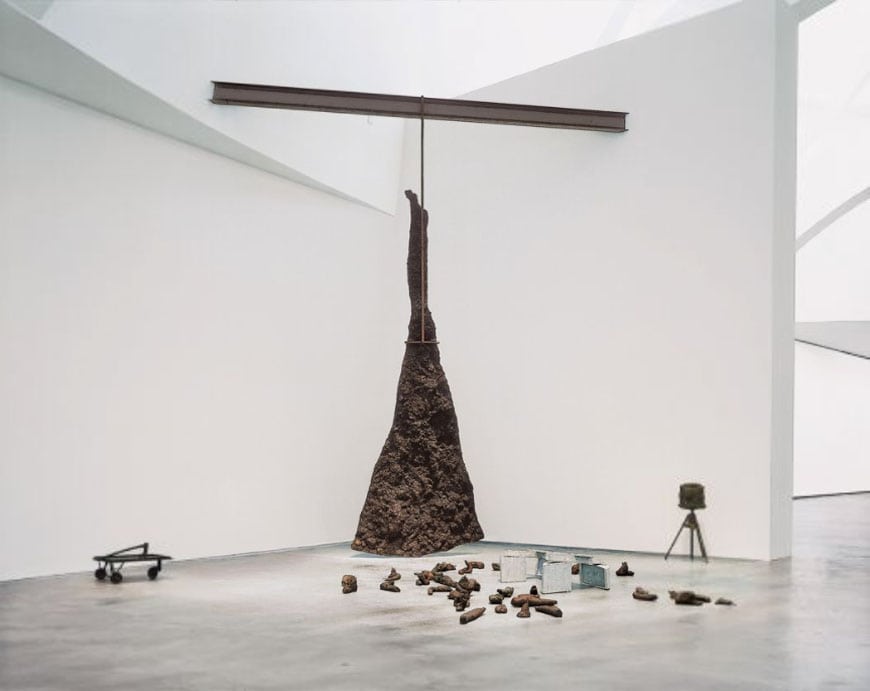
View of two of the museum’s “white box” galleries; photo courtesy of Guggenheim Bilbao
Cover image: photo by David M. Heald, © SRGF, New York, courtesy of the Solomon R. Guggenheim Foundation
How our readers rate this museum (you can vote)
copyright Inexhibit 2024 - ISSN: 2283-5474

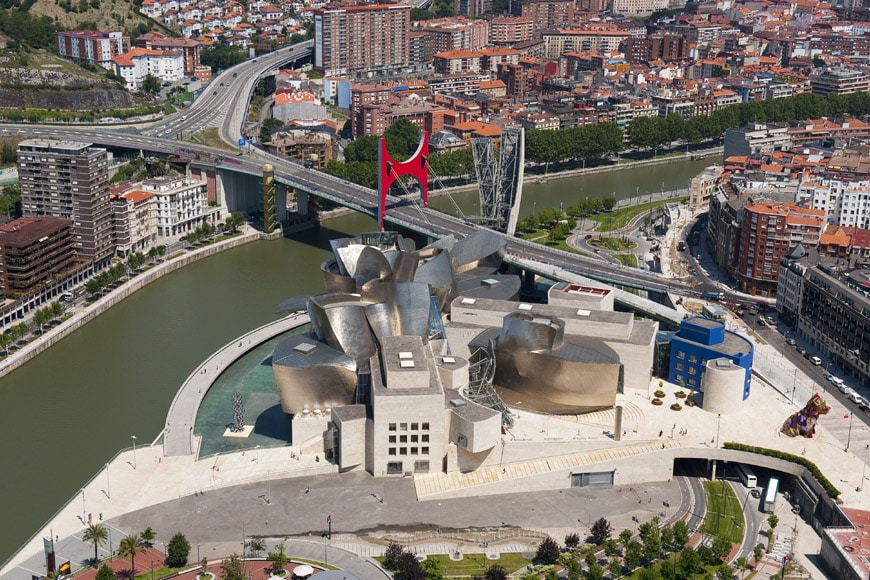
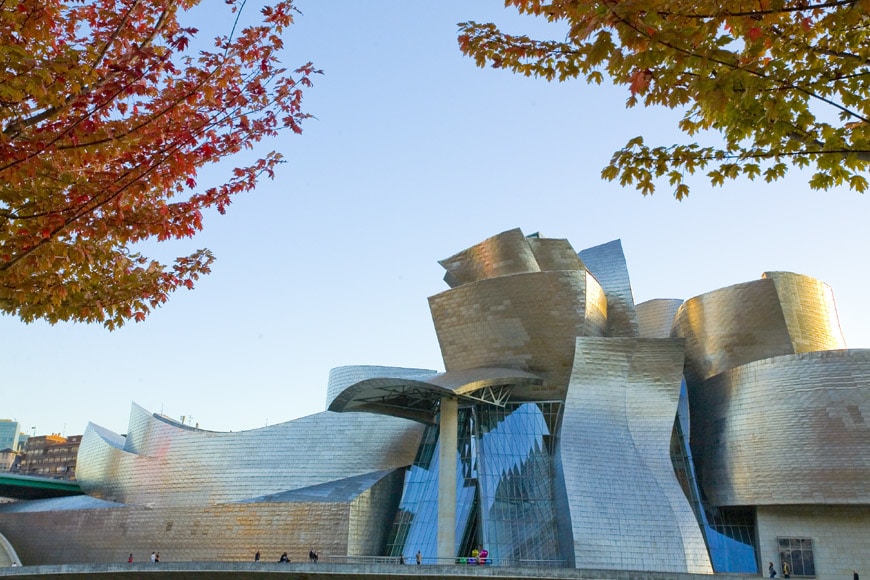
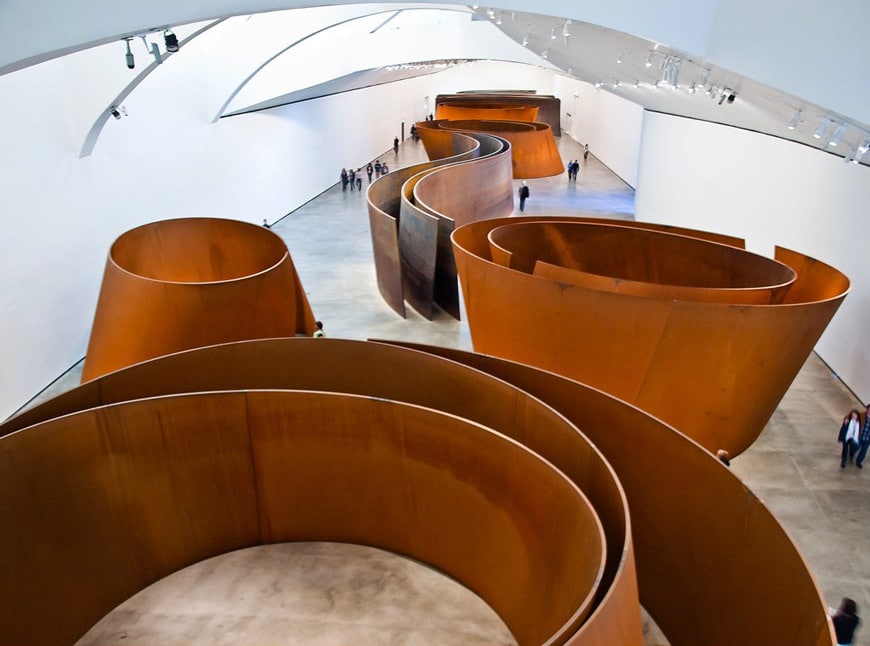
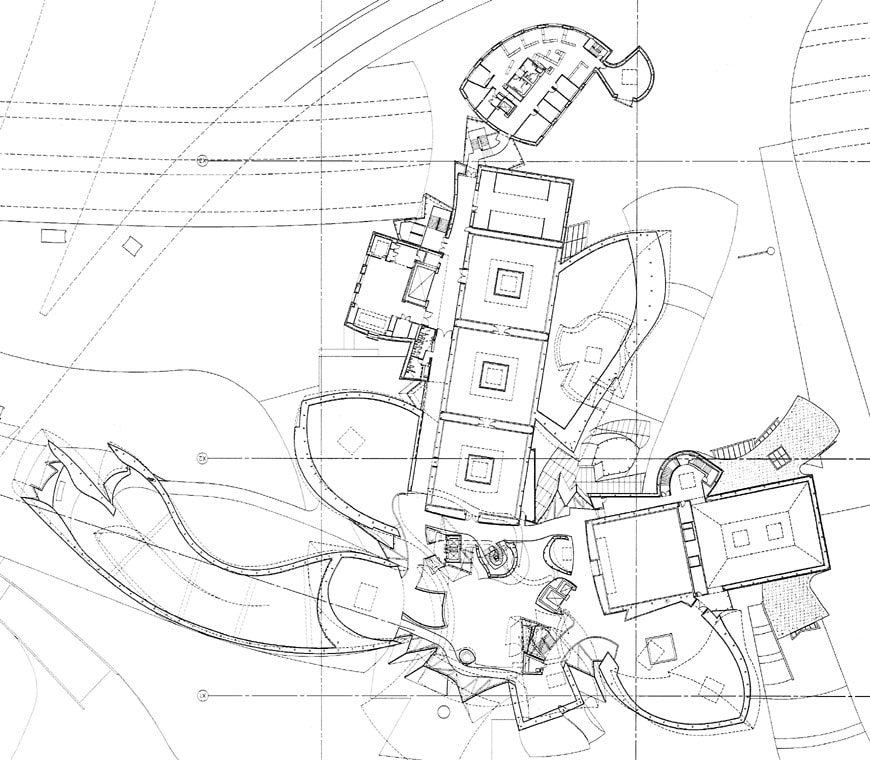

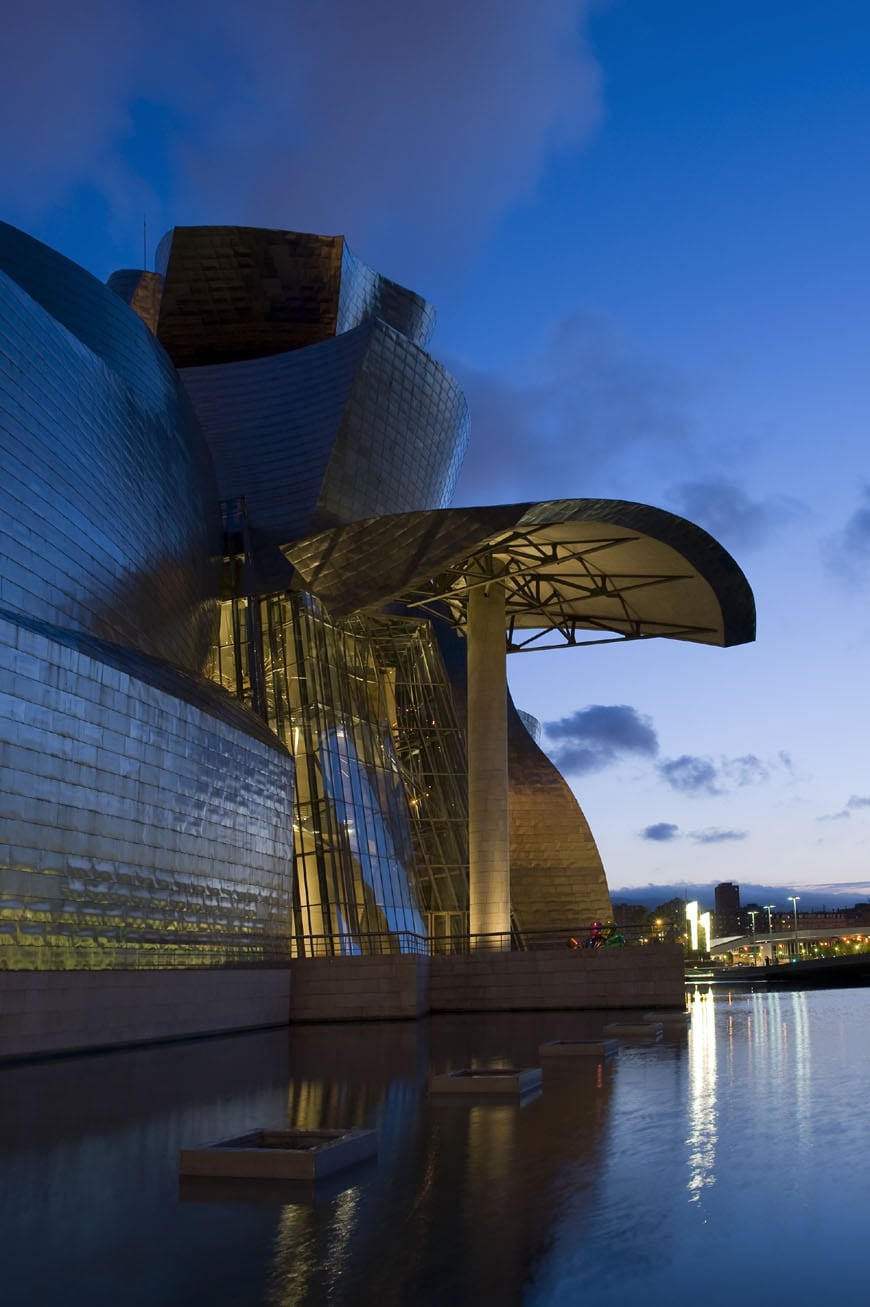
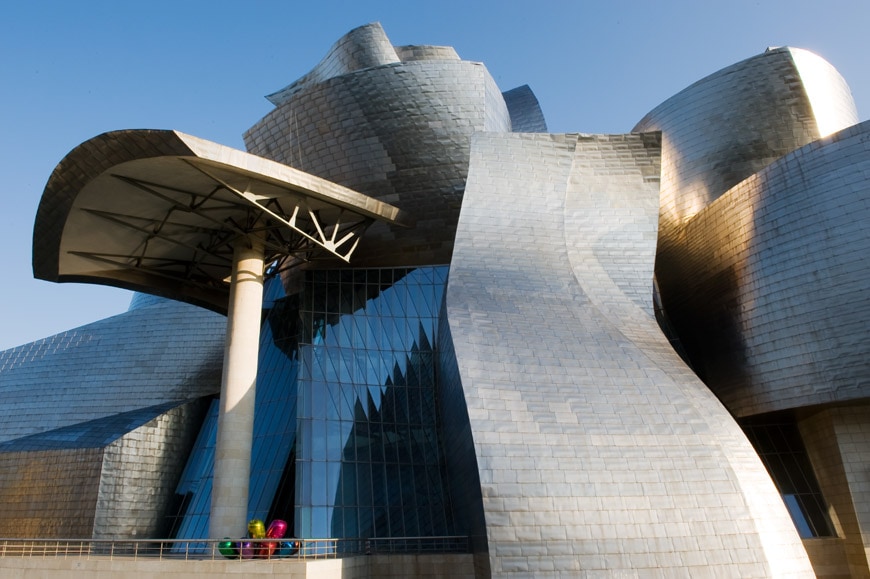
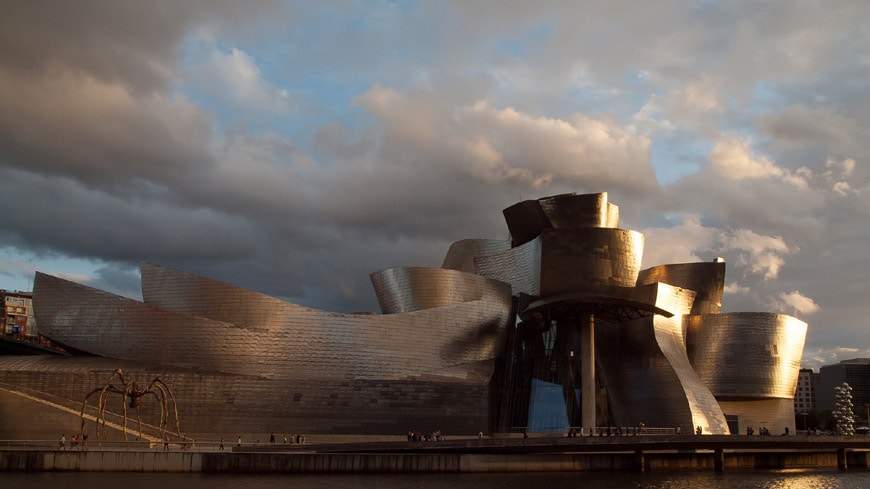
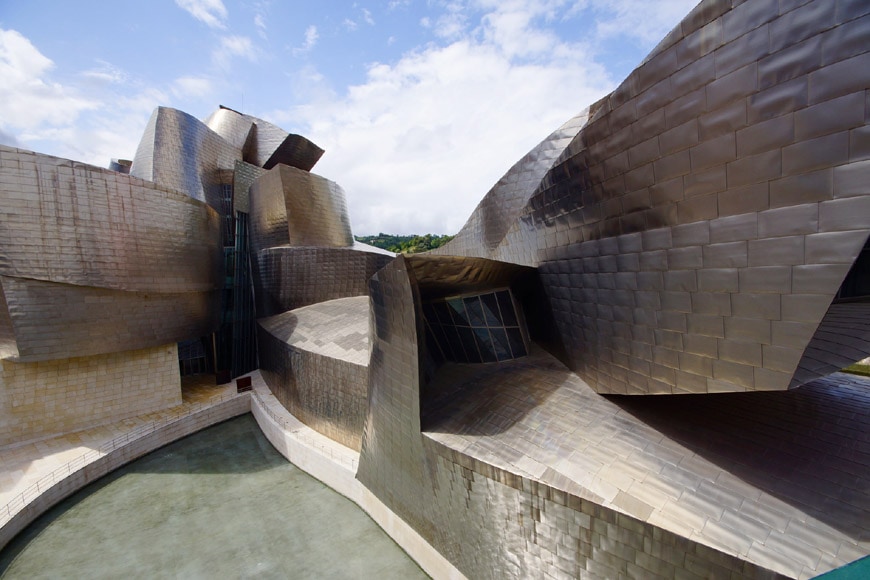
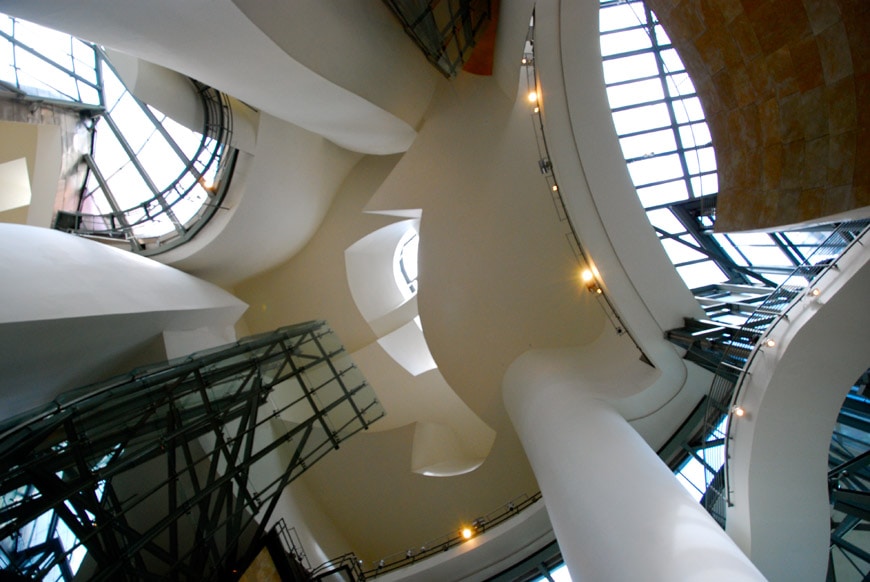
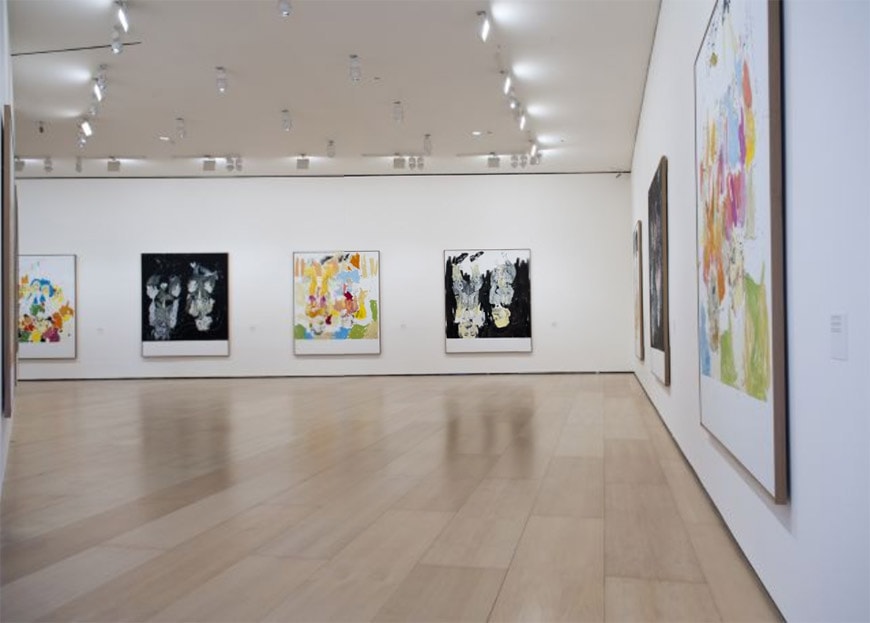

 (8 votes, average: 4.63 out of 5)
(8 votes, average: 4.63 out of 5)